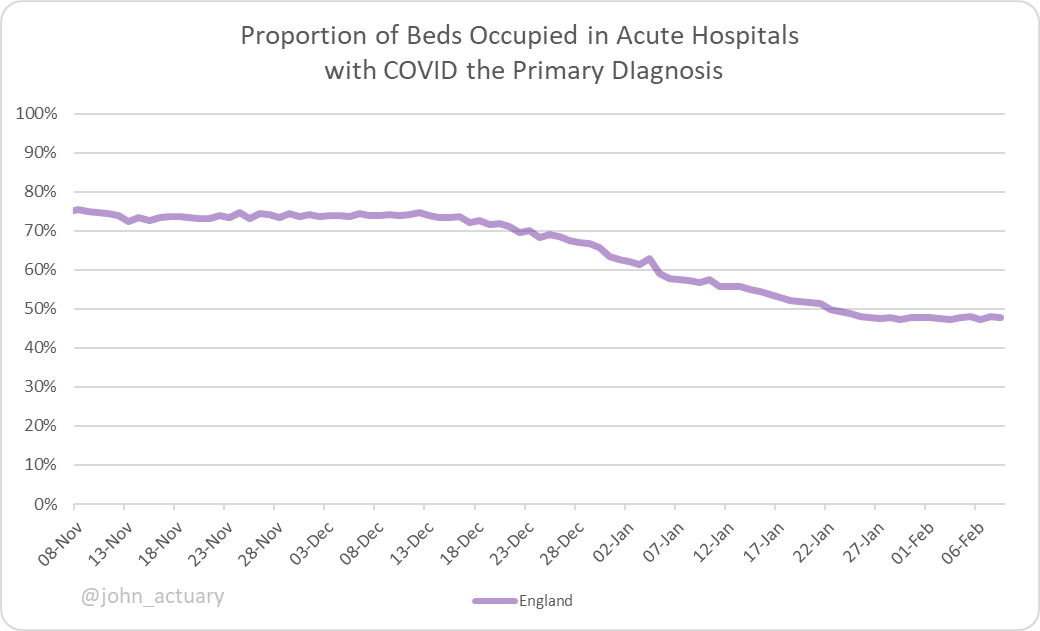
Latest data on England beds occupied with COVID show that the proportion where COVID is regarded as the primary diagnosis has stabilised over the last couple of weeks at just under 50%.
Remember that doesn't mean none of the others weren't in some way triggered by COVID.
1/
Remember that doesn't mean none of the others weren't in some way triggered by COVID.
1/

There's quite a divergence by region though, with London the lowest at around a third, up to the SW (where admissions have been stubbornly level of late) the highest at just under two thirds.
2/
2/

Overall, the number in acute hospitals where COVID is the primary diagnosis has fallen this week by 11%, and now stands at 5,110. That's 40% down on the peak of 8,582, reached exactly a month ago today.
3/
3/

The usual caveat that the assessment is on a best endeavours basis based on the judgement of those treating the patient. And again, COVID is likely to have been a contributory factor for some of the others, eg heart attacks and strokes, as described here.
4/
4/

And even if COVID is completely incidental, the need to segregate patients with COVID to avoid cross infection and the additional precautions needed, adds to the complexity of dealing with patients and results in a reduced capacity.
5/5
5/5
• • •
Missing some Tweet in this thread? You can try to
force a refresh



















